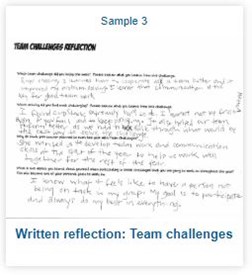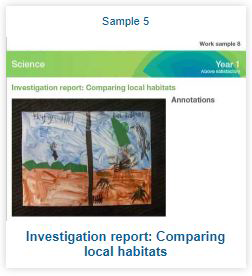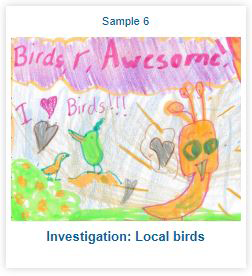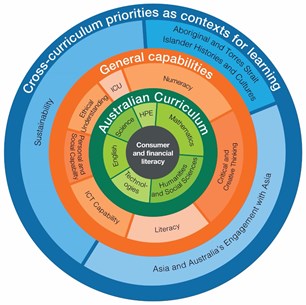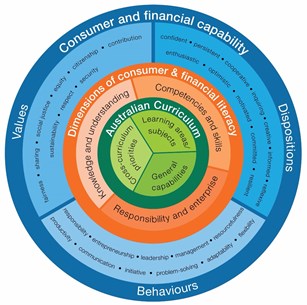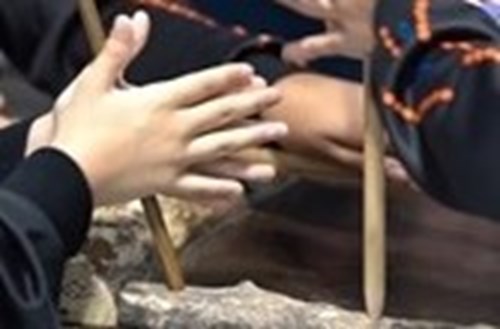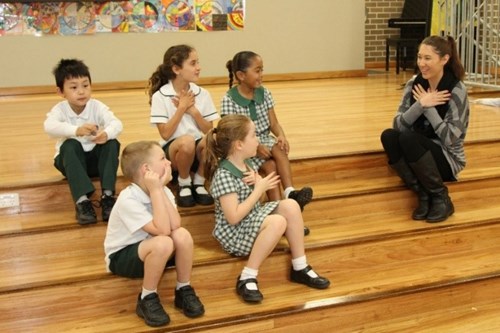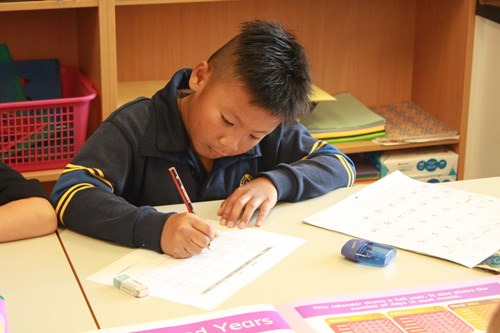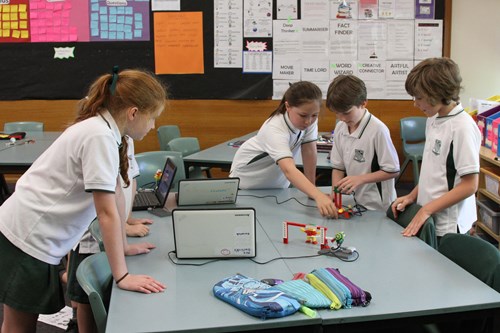In the first edition of Primary matters for 2020 we unpack Australian Curriculum resources known as curriculum connections. These resources provide opportunities for teachers to make connections across the dimensions of the Australian Curriculum, based on different conceptual themes.

Curriculum connection resources have been developed for the following:
- consumer and financial literacy
- food and fibre
- food and wellbeing
- online safety
- outdoor learning.
Each curriculum connection includes the rationale and structure of the connection, and a range of resources such as useful links.
- What aspects of the curriculum connections could be useful in my planning?
- How can I develop the themes from the curriculum connections in my school?
- What opportunities do the curriculum connections provide for professional learning?
- How can I use the curriculum connections to create interdisciplinary learning opportunities for students?
- How can I link the three dimensions of the Australian Curriculum using curriculum connections?
- Which curriculum connection could I start with?
A curriculum connection:
- illustrates relationships across the dimensions of the Australian Curriculum
- offers opportunities to explore the cross-curriculum priorities and general capabilities
- works as a starting point for building interdisciplinary units
- provides a framework for guided, integrated learning
- connects teachers to a range of interdisciplinary resources
- provides multiple pathways to search, access and organise content to support learning.
![]() "Kids can grow fine up without nature, but with it, there are marked improvements in attention deficit hyperactivity disorder, learning ability, creativity and mental, psychological and spiritual health.” (Richard Louv, 2010)
"Kids can grow fine up without nature, but with it, there are marked improvements in attention deficit hyperactivity disorder, learning ability, creativity and mental, psychological and spiritual health.” (Richard Louv, 2010)
The outdoor learning curriculum connection provides a framework for students to experience guided, integrated learning across the curriculum in natural environments.
The four dimensions of this connection are:
- skills and knowledge
- human–nature relationships
- conservation and sustainability
- health and wellbeing.
The four dimensions have been developed in consultation with Outdoor Education Australia. The dimensions suggest that to maximise its effectiveness, learning should be sequential.
There are work samples that have been published for this connection. Each sample outlines a summary of the task and connection to learning area achievement standards.
Examples of primary outdoor learning work samples
Pulteney Grammar School is an inner-city independent school in Adelaide. It has approximately 1,000 students from early learning to Year 12 across four sub-schools. Primary matters has been given an opportunity to explore how Kurrajong (early learning to Year 2) have embraced the outdoor learning curriculum connection to develop their outdoor space and make strong curriculum links.

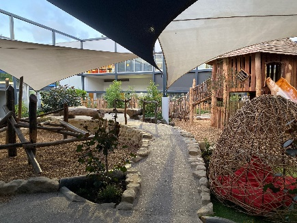
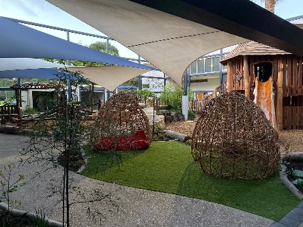
“Working in conjunction with Nature Play SA, we have turned the space into a wonderful nature play area, with areas to collaborate, explore, manage risk and develop an adventurous spirit.” Natalie Natsias, Head of Kurrajong (ELC – Year 2)
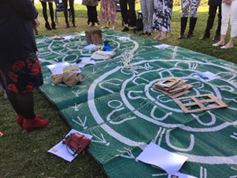 The staff concentrated on providing learning environments and experiences that are connected to nature and focused on giving students agency and ownership of the learning. Connection with Nature Play SA was an important part of the development process as the organisation spent time with staff exploring ways to integrate curriculum with outdoor learning and this provided opportunities for the development of a range of teaching and learning ideas and curriculum links.
The staff concentrated on providing learning environments and experiences that are connected to nature and focused on giving students agency and ownership of the learning. Connection with Nature Play SA was an important part of the development process as the organisation spent time with staff exploring ways to integrate curriculum with outdoor learning and this provided opportunities for the development of a range of teaching and learning ideas and curriculum links.
A benefits and risk process was undertaken with the students in order to provide guidelines for the use of the space, again with a focus on student agency. The outdoor learning environment has provided opportunities for the students to connect to the natural environment, particularly important in an inner-city school.
The staff have formed a ‘nature play working party’, and this group meets every three weeks to discuss the space and the curriculum links. An example of the links to curriculum include the Creature Quest where students were asked to record creatures that they had observed visiting the space during a three-week period. The Year 2 students collated the data and displayed the results in bar graphs and pie charts, and shared their results with the school community. This led to some thinking about ways to increase the variety of creatures that visit the space by planting different flora species. After the success of the Creature Quest, students were asked which flowers, fruit and vegetables they would like to include in the space. Students also created labels to provide information on the plants and the maintenance needed to care for them.
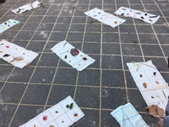 The students have formed a working party – a student action team – to provide themselves with regular opportunities to share their voice and suggest future projects at school gatherings.
The students have formed a working party – a student action team – to provide themselves with regular opportunities to share their voice and suggest future projects at school gatherings.
“Our nature play space is fun because we get to grow things and play with our friends. The plants are growing and we like to take care of them. We love making potions and mud cakes the best.”
Pulteney Grammar School students Jon and Amy* (names have been changed)
Some of the projects have focused upon:
- sunflowers
- water conservation
- data collection of birds
- inquiry into Kaurna land.
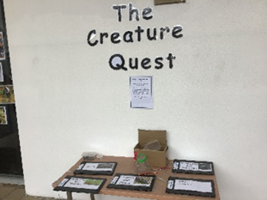 These projects have strong and explicit connections to the learning areas of Mathematics, HASS and Science, the cross-curriculum priorities: Sustainability and Aboriginal and Torres Strait Islander Histories and Cultures, and to the Critical and Creative Thinking general capability.
These projects have strong and explicit connections to the learning areas of Mathematics, HASS and Science, the cross-curriculum priorities: Sustainability and Aboriginal and Torres Strait Islander Histories and Cultures, and to the Critical and Creative Thinking general capability.
"Students have interacted enthusiastically in the natural surroundings and increasingly demonstrated student agency. Without instructions or prompting from teachers, the children have been building structures and collaborating as they play. Through trial and error and confidently working together to analyse their work, they have communicated and problem-solved to ensure their structures are sturdy and functional for their creative play experiences. Students often collaborate as they follow the essential agreements and guidelines they collectively created to ensure the Nature Play area is a place where ideas are respected. As the children seek opportunities to foster their curiosity and recognise the risks, they are encouraged to make judgements and respond to the limits of their skill development. Teachers are integrating the outdoor learning space into the curriculum and lesson plans aim to support the connection to the natural world and to create a sense of responsibility for our environment." Natalie Natsias, Head of Kurrajong (ELC – Year 2)
The work samples demonstrate student learning in relation to achievement standards.
In the outdoor learning connection, the samples include the task summary, the relevant learning area achievement standard and the completed task, annotated to indicate achievement against the standard. The achievement standard includes highlighted sections reflecting the aspects being assessed.
The work samples can assist teachers by providing:
- initial ideas for task development in relation to achievement standards
- exemplar tasks
- exemplification of standards
- a benchmark to use for comparison when assessing
- a range of pedagogical approaches
- a stimulus for moderation and professional discussions.
![]() “In an increasingly complex, connected and rapidly changing world, it is critical for every young Australian to develop the skills needed to flourish as healthy, safe, confident and digitally literate citizens.” (ACARA, 2019)
“In an increasingly complex, connected and rapidly changing world, it is critical for every young Australian to develop the skills needed to flourish as healthy, safe, confident and digitally literate citizens.” (ACARA, 2019)
At the end of 2019, ACARA added an online safety curriculum connection to the suite of curriculum connections published on the Australian Curriculum website. This curriculum connection provides information and resources for educators to assist the development of teaching and learning programs about online safety, tailored to meet the needs of their school.
The curriculum connection is based around five interrelated dimensions of online safety:
- values, rights and responsibilities
- wellbeing
- respectful relationships
- digital media literacy
- informed and safe use of information and devices.
These dimensions of learning have been developed in consultation with the eSafety Commissioner and are aligned to learning area content, general capabilities and cross-curriculum priorities.
The connection can be found here:
https://www.australiancurriculum.edu.au/resources/curriculum-connections/portfolios/online-safety/
![]() “Knowing how to manage personal finances is one of the most important and challenging features of everyday life. It is a core skill in today’s world. It affects quality of life, the opportunities individuals and families can pursue, their sense of security and the overall economic health of Australian society.” National Financial Literacy Strategy (ASIC, 2011)
“Knowing how to manage personal finances is one of the most important and challenging features of everyday life. It is a core skill in today’s world. It affects quality of life, the opportunities individuals and families can pursue, their sense of security and the overall economic health of Australian society.” National Financial Literacy Strategy (ASIC, 2011)
This curriculum connection provides authentic contexts that teachers can use to deliver the Australian Curriculum in an interdisciplinary way. This connection is designed to:
- guide teachers in identifying content in the Australian Curriculum that supports the teaching and learning of consumer and financial literacy
- connect teachers to a range of interdisciplinary resources that have been developed by the Australian Securities and Investments Commission (Moneysmart for teachers) and the Australian Taxation Office (Tax, Super and You) to support the teaching and learning of consumer and financial literacy.
![]() “There are increasing community concerns about food issues, including the nutritional quality of food and the environmental impact of food manufacturing processes. Students need to understand the importance of a variety of foods, sound nutrition principles and food preparation skills when making food decisions to help better prepare them for their future lives.” (ACARA, 2019)
“There are increasing community concerns about food issues, including the nutritional quality of food and the environmental impact of food manufacturing processes. Students need to understand the importance of a variety of foods, sound nutrition principles and food preparation skills when making food decisions to help better prepare them for their future lives.” (ACARA, 2019)
This curriculum connection looks to develop young Australians’ understanding and appreciation of the importance of good nutrition for health and wellbeing. The food and wellbeing curriculum connection is differentiated for the different stages of schooling. In Foundation – Year 6, the dimensions of this learning are:
- individuals, families and communities
- nutrition and food specialisations.
In this connection, specific concepts can be addressed:
- Becoming independent – developing independence by making decisions and taking action
- Connecting with others – understanding how to interact and live with others and understanding how decisions impact on others
- Taking actions towards preferred futures – understanding of, and sense of responsibility for, decisions and actions that promote preferred futures
- Creating designed solutions – creating designed solutions using design processes and production skills.
![]() “Food and fibres are the human-produced or harvested resources used to directly sustain human life and are produced in managed environments such as farms and plantations or harvested from wild stocks. Challenges for world food and fibre production include an increasing world population, an uncertain climate and competition for resources such as land and water. Students need to engage in these challenges by understanding the processes of food and fibre production and by investigating innovative and sustainable ways of supplying agriculturally produced raw materials.” (ACARA 2019)
“Food and fibres are the human-produced or harvested resources used to directly sustain human life and are produced in managed environments such as farms and plantations or harvested from wild stocks. Challenges for world food and fibre production include an increasing world population, an uncertain climate and competition for resources such as land and water. Students need to engage in these challenges by understanding the processes of food and fibre production and by investigating innovative and sustainable ways of supplying agriculturally produced raw materials.” (ACARA 2019)
The food and fibre connection provides a framework for all young Australians to understand and value primary industries.
Students have the opportunity to gain knowledge, skills and understandings about the production of the food they eat, fibres they use and the environment they live in. This learning addresses the key processes of production, marketing, consumption and sustainable use of resources and waste recycling.
This connection provides rich opportunities to address aspects of the cross-curriculum priorities, in particular Sustainability.
The dimensions of this connection are:
Sustaining lives: Food and fibre are essential to human life and must be managed in ways that support current and future generations.
Resources: Physical, financial, social and environmental resources are required to produce food and fibre and that this involves sustainable land and water management.
Science and technology: Science and technology knowledge, skills and understandings that support sustainable food and fibre production.
Economy: The value of primary industries to the Australian economy and Australia’s development.
People: The diversity of people involved in food/fibre production and their needs, careers and lives.
While much of this curriculum connection has its base in secondary curriculum, there are some links to primary curriculum, especially in Technologies, HASS, Mathematics and Science.
https://www.australiancurriculum.edu.au/resources/curriculum-connections/portfolios/food-and-fibre/
Additional resources and publications can be located through the 'Resources/publication' tab on the Australian Curriculum website.

Like what you see? Subscribe to receive Primary Matters four times a year to your inbox or email story suggestions and feedback to [email protected].
